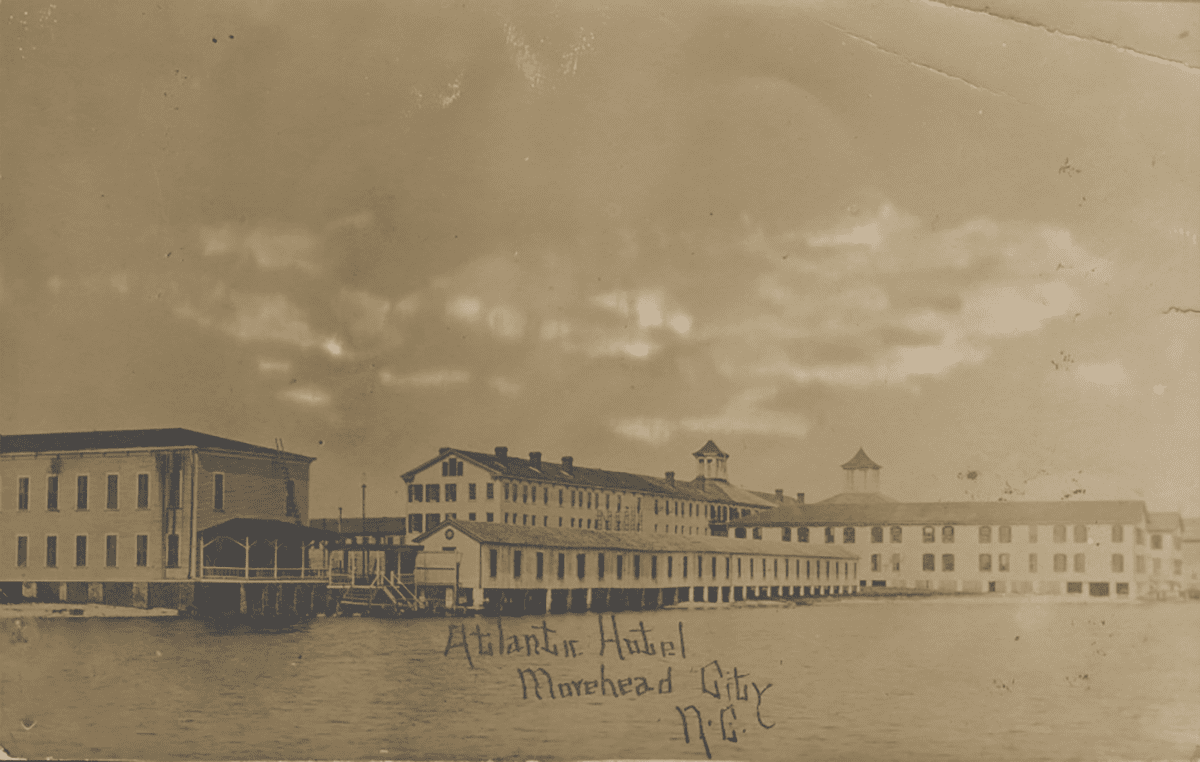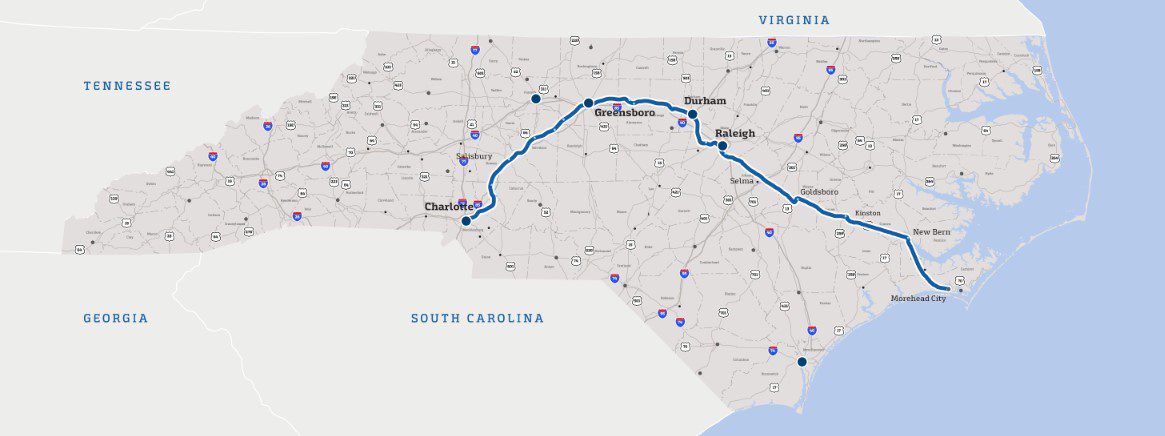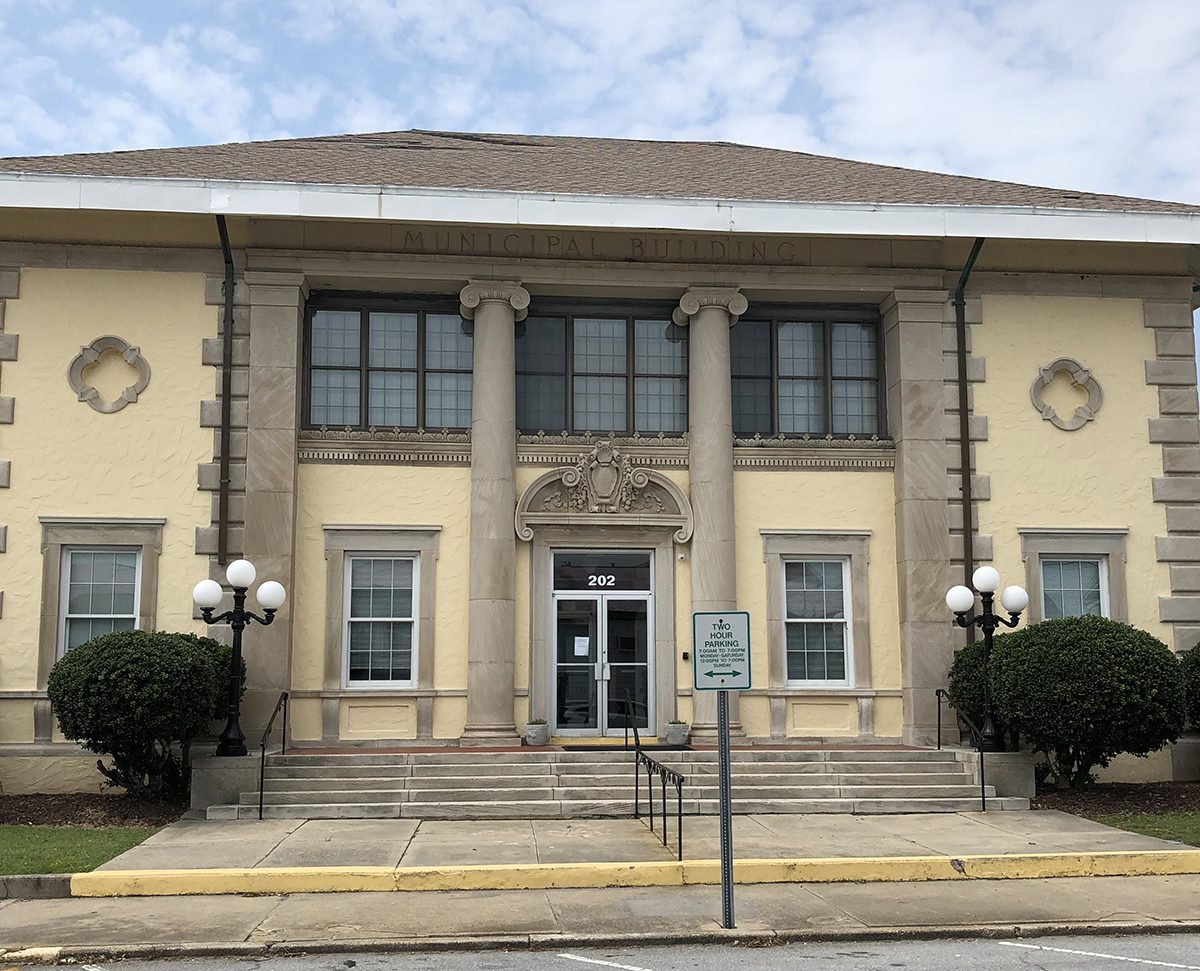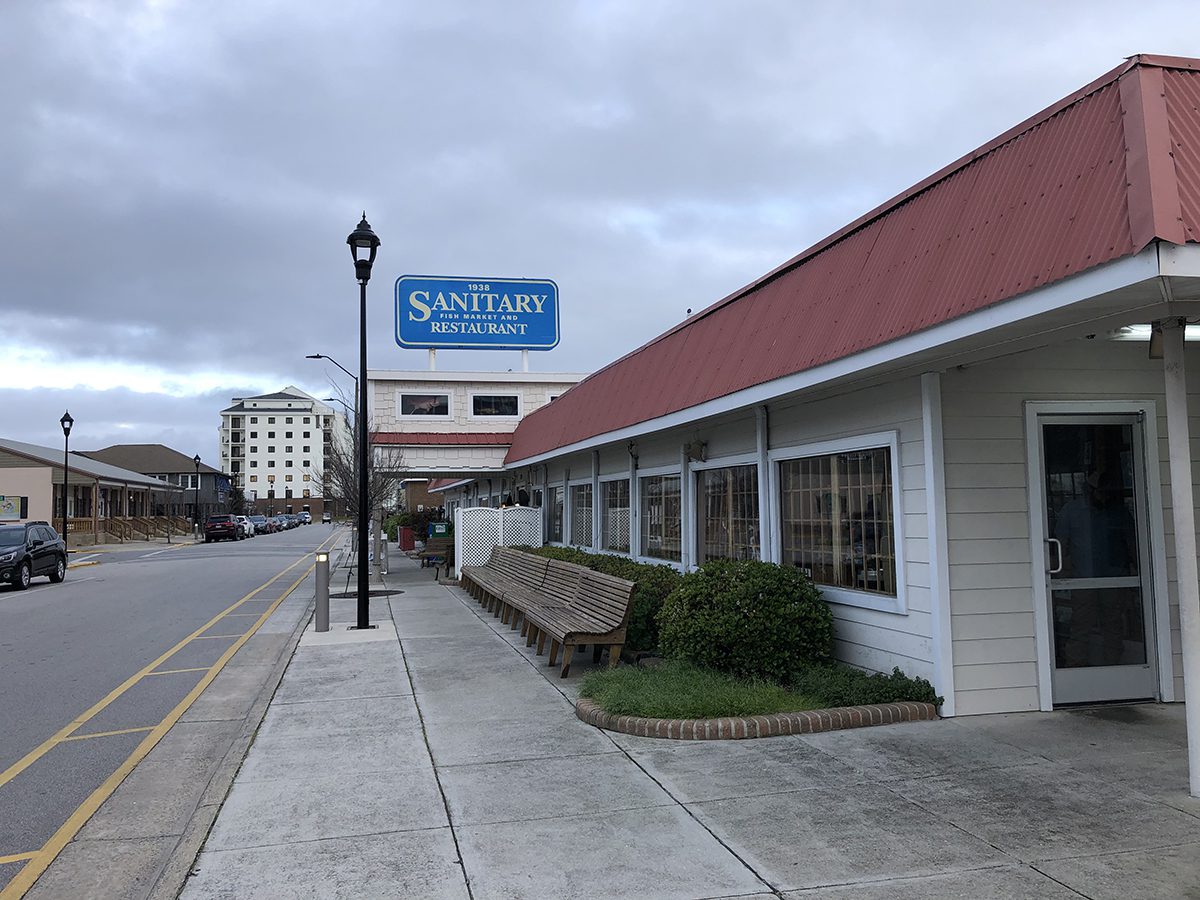
While Morehead City in Carteret County may only be the Crystal Coast’s idea of a big city, it is a transportation hub, occupying an important spot on both a state railroad and a U.S. highway, the latter of which is in the process of upgrades to interstate quality.
The city has already grown to the point where it hosts some of the only major chain restaurants and retail stores, as well as the largest car dealerships in the county, and a new interstate connection is sure to amplify that growth.
Supporter Spotlight
But 200 years ago, the land that Morehead City now comprises was an almost-blank spot on the map. It took years of planning, a shift in state policy, and the burgeoning growth of tourism for Morehead City to become one of North Carolina’s economic drivers.
Morehead City emerged over a century after the formation of Carteret County and its neighbor to the east, Beaufort. In Carteret County’s first century, the county and the whole state were focused on turning the town of Beaufort into a major port. That project was slow, however, and the rest of Carteret County was kept impoverished by poor soil and isolation from the rest of the state. Without limited shipping and the naval stores industry, the county would have had no economic base.
But in the mid-19th century, eastern Carteret County became the site of a new plan to rejuvenate the state’s economy through transportation. The plan was centered around the railroad and the vision of a former governor, John Motley Morehead. Morehead was a believer in internal improvements: the construction of roads, canals, and railroads to facilitate commerce and urban development. Canal building and the plank roads movement had been slow and tedious, but railroads seemed to hold greater promise.
After initial experiments, two railroads were built in the 1830s. The success of these north-south routes, the Wilmington and Weldon Railroad and the Raleigh and Gaston Railroad, prompted interest in an east-west line stretching from either the mountains or the western Piedmont to the coast.
In 1849, the North Carolina Railroad Co. was incorporated to put this plan into motion, and Carteret County’s central position along the coast meant that it was a natural home for the railroad’s eastern terminus.
Supporter Spotlight
The North Carolina Railroad started out as a 130-mile stretch between Greensboro and Goldsboro. Three years later, the Atlantic and North Carolina Railroad was incorporated to bring this line to the coast. Now a 317-mile rail corridor connecting Charlotte and the North Carolina Port of Morehead City, its eastern terminus was placed at what was then called Shepherd’s Point, a plot that had been bought by the Shepherd’s Point Land Co. near Beaufort.
The town was incorporated in 1857 and named after Gov. Morehead, who had been an investor in the land company.
Just as the town was beginning to grow, the Civil War turned it into an attractive military target. The area was protected by Fort Macon, a nearby masonry fort staffed by a small garrison. In their preparations to take the fort, Union troops under Gen. John G. Parke set up camp in a small community near Morehead City known as Carolina City. Their landing point on Bogue Banks, Hoop Pole Creek, was directly across the sound from Carolina City. Fort Macon fell in less than two weeks and the Union occupied the entire region for the rest of the war.
For several years after 1865, Morehead City was the only railroad hub in Carteret County. It was the industrial center for the county and had the vast majority of its factories and retail centers. By 1903, the town had a furniture manufacturer, an ice factory, two fish factories, five hotels, and 17 general merchandise businesses, two of which were owned by African Americans.

The town’s railroad connection to the rest of Carteret County greatly aided the county’s farmers, who could send their produce to Morehead City and have it shipped to far-off locales. The railroad also facilitated tourism, which had been limited to boat traffic prior to the 1850s.
A visible symbol of this new industry was the Atlantic Hotel, first located in Beaufort and moved to Morehead City in 1880. The hotel’s popularity led to several organizations being founded in its event spaces, including the state’s teacher and banker associations.
The early 20th century saw Morehead City grow even more sophisticated. It became the home for marine research facilities and sport fishing tournaments. The city attracted tourists who took the railroad and later came via U.S. Highway 70, which was completed in Morehead City by the late 1920s.

As a reflection of this prosperity, Morehead received one of the county’s most architecturally significant buildings outside of Beaufort in 1926. At 202 S. Eighth St., the Morehead City Municipal Building is described in “A Guide to the Historic Architecture of Eastern North Carolina” by Catherine W. Bishir and Michael T. Southern as Morehead’s “most distinctive downtown landmark.” It is “an imposing two-story structure with a large hip roof and tall Ionic columns,” according to Bishir and Southern.
Morehead City’s status as the business center of Carteret County was particularly relevant for those who grew up in the coastal town.
Dee Lewis, a local historian and frequent volunteer at the Carteret County Historical Museum, grew up in Morehead City in the 1950s and 1960s. He recalls that Morehead City was the economic engine of the county throughout his childhood. It was the center of good-paying jobs at the port and nightlife down Arendell Street. Lewis contrasted the economic and entertainment opportunities in Morehead with the sleepy communities on the mainland and the seasonal tourist spots on Bogue Banks.
As for Morehead City’s historic neighbor to the east, Lewis noted that when he was younger, “the sidewalks rolled up at sundown in Beaufort.”
Only since the 1950s have other areas in Carteret County grown to rival Morehead City for economic impact. Two developments helped to shift this growth. The first was the construction of bridges connecting Emerald Isle with the mainland. These new bridges led to an explosion of population on the island and the transformation of Bogue Banks from a regional vacation destination to a national one. Visitors to the island could now enjoy many of the lodging and amenities that had previously been located only in Morehead City. Consequently, the population of Emerald Isle increased from 14 in 1960 to over 3,000 by the 2000 census.
At around the same time, Newport and the surrounding areas were bolstered by the construction of Marine Corps Air Station Cherry Point in nearby Havelock. This new base resulted in a need for housing that bolstered Havelock as well as its neighbor to the south, Newport. The growth of these areas has supported the county while taking little away from Morehead City’s economic strength. The city’s population more than doubled between 1940 and 2000, and it remains the largest town in the county by several thousand residents.

Today, Morehead City remains a center of economic activity for the county. It was a featured location for a 2022 episode of Food Network’s “Diners, Drive-Ins and Dives,” when host Guy Fieri held a family reunion on the Crystal Coast and visited several restaurants.
The town continues to grow and construct new businesses while also maintaining its older institutions, such as the famous Sanitary Fish Market and the Big Rock Blue Marlin Tournament.
Longtime resident Bob Guthrie recalled that as a child, he always wanted passenger trains to run through the city, but now it is a busy hub of tourism, and “you don’t like tourism when you can’t get to things.”

Morehead City is awaiting the completion of Interstate 42, which is to consist of improvements to U.S. 70 between Raleigh and Morehead City and is touted as a way to drastically reduce travel times between the Piedmont and the coast.
Lower travel times may lead to further growth in Morehead City, a municipality that, at 9,556 residents, is still relatively small for a tourist center on the North Carolina coast. The project includes the nearby Havelock Bypass currently under construction.
This new highway has the potential to change the mix of business development and small-town charm that has defined Morehead City for the past century.








